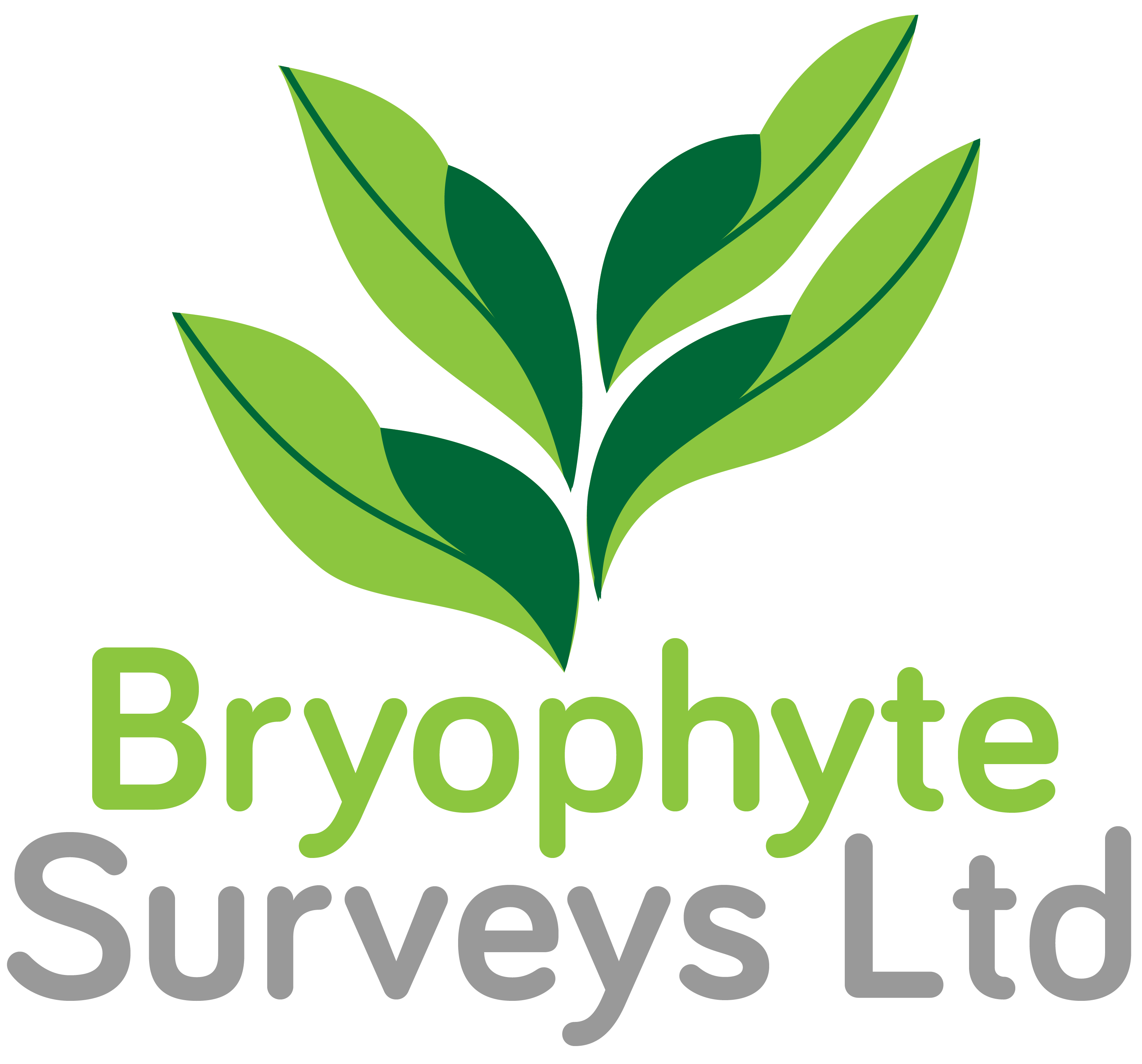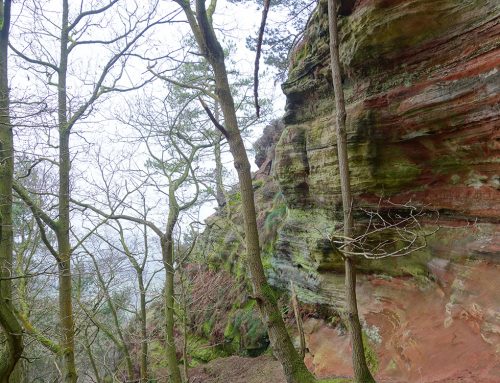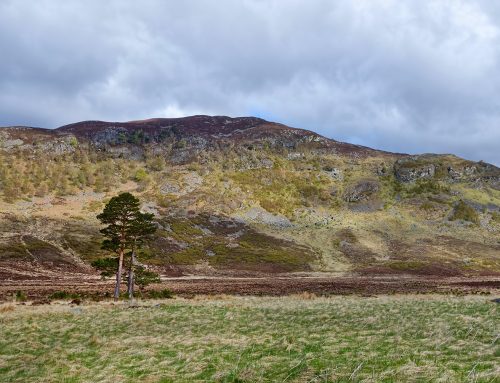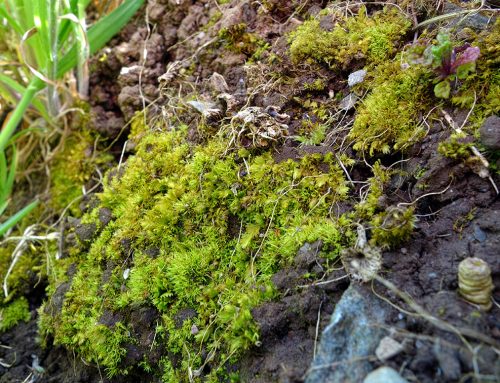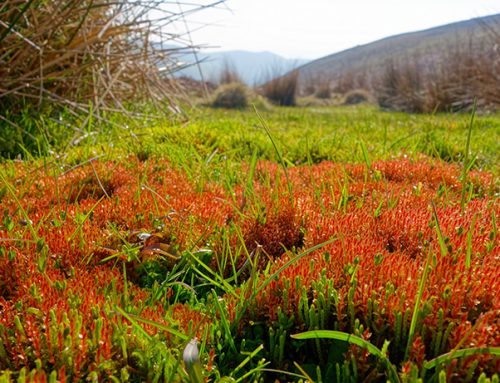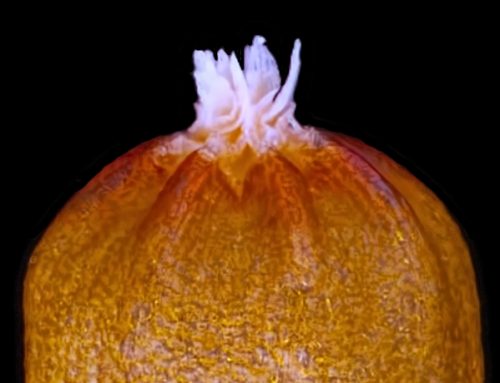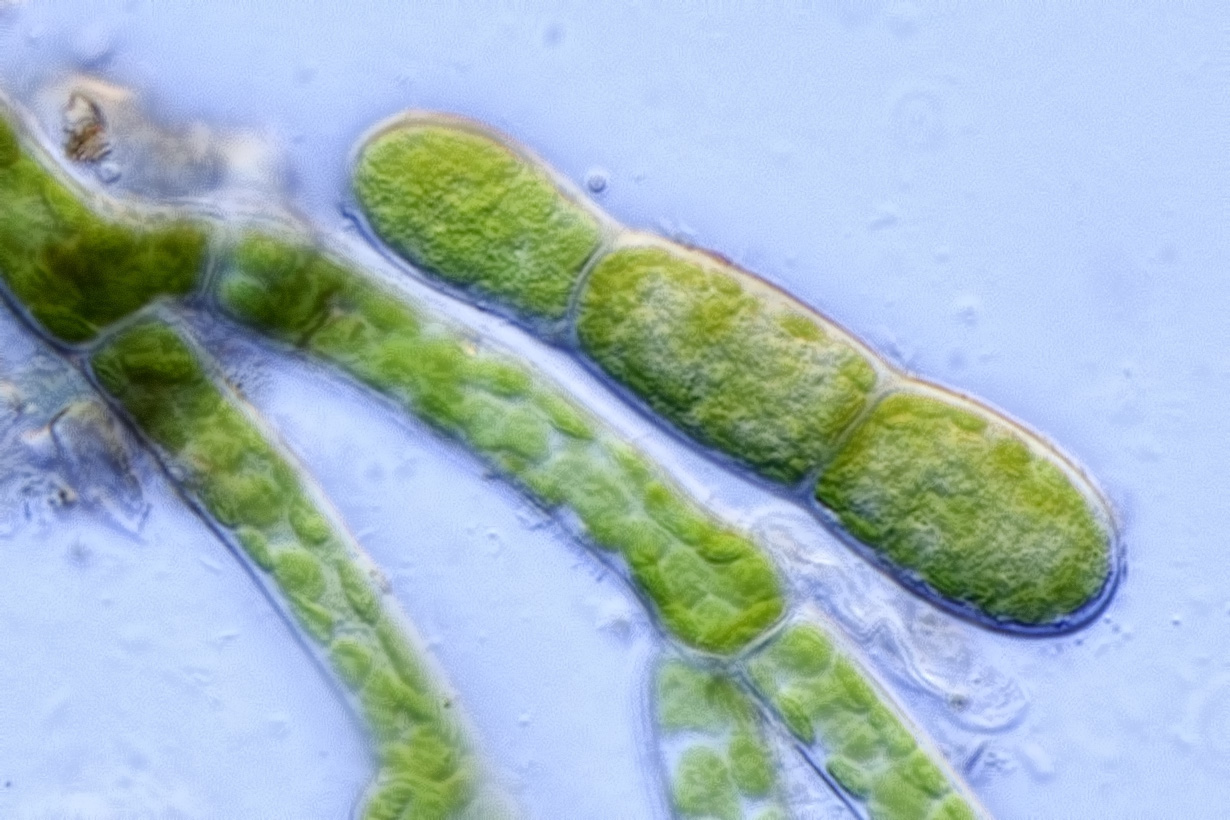
The protonemal gemmae (three-celled body) of Scopelophila cataractae likely hitch a ride in their thousands on rabbits at Tolgus Tin Works, transporting the plant between isolated patches of suitable habitat.
Rabbits are frequently important for maintaining the habitat for rare species at sites in Britain, though this usually concerns their grazing activities. At the old Tolgus Tin Works, near Redruth in Cornwall, the rare copper-moss Scopelophila cataractae benefits in a different way. The moss can only grow on bare substrates that are high in heavy metals and is here confined to the old waste produced by the works, which was dumped on the surrounding ground. Exposures of the metalliferous spoil have gradually declined as coarse vegetation has developed and inert spoil has been imported and dumped. The specialist metallophytes such as S. cataractae have suffered as a consequence.
Upon first view, the old dump of the mine looks like a hostile place for bryophytes, being cloaked in dense vegetation. But closer examination reveals a hidden network of burrows and runs created by mammals, especially rabbits. In effect, this provides a dynamic patchwork of exposures of metal-rich spoil that is inhabited by Scopelophila. In these often deeply shaded conditions, the moss largely occurs, especially within burrow entrances, as a protonemal mat with abundant gemmae. These gemmae must be transported in their thousands on the fur of the rabbits, providing the moss with an effective means of colonising new exposures of spoil created by the animals.
